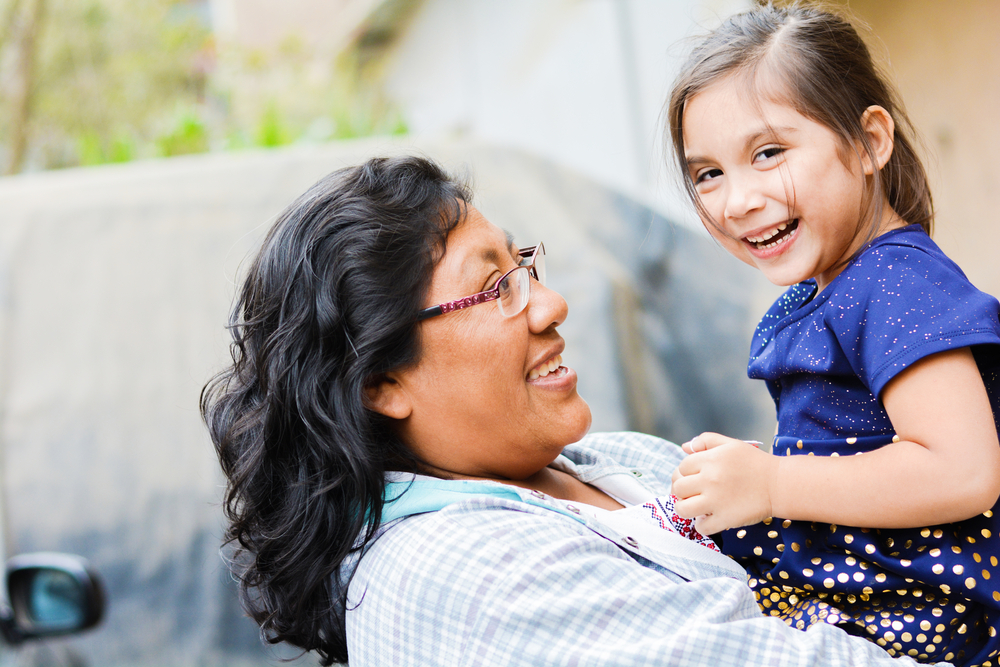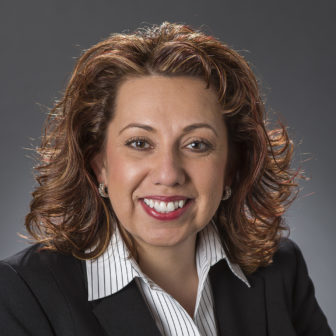
Ruslana Iurchenko/Shutterstock
.
A crisis — such as the COVID-19 global pandemic — has a way of shaking up our worlds. And while this can be disruptive and unsettling, this upheaval can also present extraordinary opportunities to reimagine our worlds and reset the expectations and aspirations that we have for ourselves and each other.

Sandra Gasca-Gonzalez
COVID-19 is a disruption of epic proportion. As we collectively weather this storm, our minds must turn to protecting the most vulnerable in our midst — chief among them, children and older youth in the foster care system, whose lives had already been turned upside down well before COVID-19 became a household name.
The level of disruption has burst already fragile seams in the child welfare system and forced those involved to find new ways to stay afloat. But the impending storm of revenue shortfalls on the horizon provides an opportunity to re-envision the system in a way that places those most affected and knowledgeable — families, youth, communities and system leaders and staff — at the forefront of leading the work.
Together, let’s create a child welfare system that believes in and supports birth families. This system strives to keep families together in their communities with the resources and supports (financial, mental health, employment, education, etc.) so that we don’t have to remove children from homes where they are otherwise safe.
Let’s create a child welfare system that — when children must be removed from their homes for their safety — emphasizes, equips and supports a co-parenting relationship that enables all foster parents and kinship caregivers to function as resource parents, embracing birth parents and their children to bolster a dynamic aimed at strengthening the family and encouraging reunification. Resource parents can be a lifetime support that birth parents and their children need to rebuild their lives together.
Let’s create a child welfare system that consistently prioritizes the voice and experience of children and their families, those who best know what they need, in case planning and policymaking. This includes hearing and addressing the needs of young people who become parents while in foster care with the aim of stemming the tide of multigeneration system involvement.
And let’s create a system that doesn’t criminalize poverty. Families in financial crisis may be low on money, but that doesn’t mean they don’t love their children. A system that supports families with economic and educational resources also reinforces the underpinnings of a strong community.
These are all still true
The new child welfare system will need to evolve and transform, rooted in the following universal and unwavering truths:
- All children have the right to live in a family setting, preferably their own family, and remain safe and protected without sacrificing other aspects of their well-being.
- Safety and well-being are best achieved through a developmental approach and policies, practices and programs that are age-appropriate, differentiated and scaled based on risks and needs.
- Families and those naturally connected to the child are responsible for and in the best position to ensure children and youth are safe and well cared for.
- Separations from family may at times be necessary to ensure safety of children and youth; however, great care must be taken to address trauma, reduce stigma, support healing and build resiliency.
- Effective working relationships and shared responsibility among child welfare practitioners, families, courts and communities are fundamental to effective policy and practice.
- Families, young people and communities have the right to be involved in decisions affecting their lives and others involved in the system. Further, they should be involved in the design of the system’s transformation because their perspectives can drive better outcomes.
- The child welfare system has a responsibility to ensure fairness, reduce disparity and promote race equity and inclusion.
- Child and family-serving organizations must lead differently by engaging staff, young people, parents and community members as leaders throughout the system and use research and data to improve policies, practices and outcomes.
To move toward this reimagined child welfare system, it is critical that we have a greater understanding of those who are coming into the system and why. This will enable us — system leaders and staff, advocates, parents, young people, philanthropic and other community partners — to better design programs and supports that can strengthen them, not tear them apart.
And we need to have a clearer articulation of the optimum mission of child protection services to make room for other systems that can be leveraged as alternative community-based interventions. Too many child protection resources are being spent on low-risk cases when those resources are needed for more high-risk situations.
Families are the experts on their kids
The Annie E. Casey Foundation has long held the conviction that families are experts on their children. Through our work we have found, and the research confirms, that children and teens thrive when they grow up in strong families and communities — and when systems listen to those involved in a young person’s life: the child or teen, the birth parent and the resource parent.
Ensuring that birth and resource parents partner on behalf of a young person is a value woven into the fabric of Casey’s ongoing work. In communities across the country, Casey helps systems modernize their approach to identifying, training and supporting resource parents, including kin parents. Maintaining stable, lifelong connections to family, communities and culture are key elements of that work.
Now is a time to reimagine how we as a collective of caring and supportive adults — child welfare practitioners, resource parents, birth families, children and older youth, advocates and community partners — can redefine the mission and objectives of child welfare to help ensure all children, regardless of race, ethnicity or where they live, have the opportunities they need and deserve to thrive.
This pandemic has been a wakeup call of many dimensions. It has caused all of us to take stock of family as we miss those we can’t see in person because of social distancing. It has caused all of us to consider our own vulnerability in the face of a life-threatening virus that has ricocheted across the globe with a mind-boggling relentlessness. It has caused us to hold dearer our own values about family and togetherness.
This is a moment for us to think even longer, even harder about the need to keep kids and older youth with their families when it is safely possible to do so. We know that this is best for kids, families and communities.
Let’s be bold enough to try innovative approaches to support families well before a call to Child Protective Services become inevitable.
Let’s be brave enough to stop doing things that simply aren’t working.
Let’s be compassionate enough to strive for solutions that give all children the opportunities we would want for our own.
Sandra Gasca-Gonzalez is vice president of the Center for Systems Innovation at the Annie E. Casey Foundation.





























